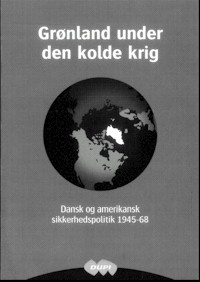![]()
The investigation
One of the most surprising events in the Thulegate affair was the Danish government's decision to "open up" its archives. On several occasions in 1993 and 1994, Hans M. Kristensen's requests for access to Danish government documents were denied on the grounds that information was secret due to national security and foreign relations. Queries by a major newspaper yielded promises by the Defense and Foreign Affairs ministers that they would review the case again, but the complete denial was upheld.
 The continued disclosures, and particularly the confidential acknowledgement
provided by the U.S. government to the Danish government in July 1995 that
nuclear weapons had also been deployed on the ground at Thule Air Base, so
shattered public confidence in the Danish government's handling of the matter
that the government commissioned the semi-independent
institute Danish Institute of International Affairs to investigate the matter.
The investigation should investigate not only the nuclear issue, the government
decided, but look at Greenland's role in the Cold War more generally.
The continued disclosures, and particularly the confidential acknowledgement
provided by the U.S. government to the Danish government in July 1995 that
nuclear weapons had also been deployed on the ground at Thule Air Base, so
shattered public confidence in the Danish government's handling of the matter
that the government commissioned the semi-independent
institute Danish Institute of International Affairs to investigate the matter.
The investigation should investigate not only the nuclear issue, the government
decided, but look at Greenland's role in the Cold War more generally.
The investigation granted specially appointed researchers access to the government's files and the resulting report would give the semi-official investigation the final word on the matter. After completion of the study, the government documents that only a year earlier had been denied to Kristensen would be made available to the public.
The study was not allowed to dig into material younger than the 1968-crash, however, thus avoiding the more contentious issue of nuclear weapons onboard U.S. warships visiting Danish ports. (Access to a brief English version of the investigation's final report is available in the right-hand bar).
Despite it limitations, the investigation confirmed the overflights and deployments of nuclear weapons. Beyond the details of nuclear weapons, however, the central conclusion -- and probably the most profound observation of the report -- touched upon the core of democracy itself. Danish governments, it concluded, had exercised a double nuclear policy on Greenland during the 1960s: a public policy that banned nuclear weapons, and a secret policy that accepted nuclear weapons. This conclusion has profound implications for the integrity of democracy because of issues such as government accountability and the public's ability to verify that a government carries out the policy that it was elected for.
The most serious limitation of the report, because of the implications for U.S.-Danish nuclear relations after 1968, is that it doesn't explain -- or explores -- the "hole" in the agreement reached by the U.S. and Denmark following the 1968 crash. On February 8 that year, the Danish parliament adopted a resolution that instructed the government to obtain "absolute guarantees" from the U.S. government that Denmark's ban on nuclear weapons was respected in "all parts of the Kingdom." In May 1968, the U.S. government did promise Denmark that it would not overfly with or deploy on the ground nuclear weapons in Greenland without the explicit approval of the Danish government. This agreement was attached to the 1951 treaty but failed to include port visits by nuclear-armed warships, leaving a huge operational and diplomatic hole in Denmark's nuclear ban in Greenland. The report does note that "introduction" of nuclear weapons to Greenland (including introduction by ship) was included in the Danish government's proposal to the Americans, but that this wording slipped out of the agreement during negotiations. The report only notes without further comments (or analysis) that the Danish government apparently accepted this limitation without comments.
The report also fails to examine (even mention) that the May 1968 agreement with Washington only concerned Greenland despite the February 8 parliamentary resolution specifically directing the Danish government to "obtain absolute" guarantees that the non-nuclear policy is respected in "all parts of the Kingdom." In fact, the report's conclusion of the negotiations portrays the parliament's resolution as if it only concerned Greenland.
For Greenland, the "hole" in the May 1968 agreement became real 15 years later in September 1983 when the nuclear-capable and nuclear weapons certified warship USS Dewey (DDG-45) arrived Nuuk in Greenland. (For a description of the ship and the visit, click here -- forthcoming). For the United States, the tacit approval by the Danish government to continue to send nuclear warships to Danish ports meant that the nuclear weapons kept coming in. For subsequent Danish governments it meant that they could continue to deceive the Danish public by insisting that the United States was well aware of Denmark's ban against nuclear weapons on its territory -- including even brief visits to the ports -- and that there was "no reason to believe" that they did not abide by it.
The first nuclear weapon after the 1968 Thule affair arrived onboard the USS Semmes (DDG-18), which visited Aalborg on July 2-5, 1968. Two nuclear aircraft carrier followed in 1969, and the USS Intrepid (CVS-11) followed in 1971 together with the submarine USS Greenfish (SS-351) in two of the most well-documented violations of Danish post-Thule nuclear policy.
©
Hans M. Kristensen | www.nukestrat.com | 2004-2005